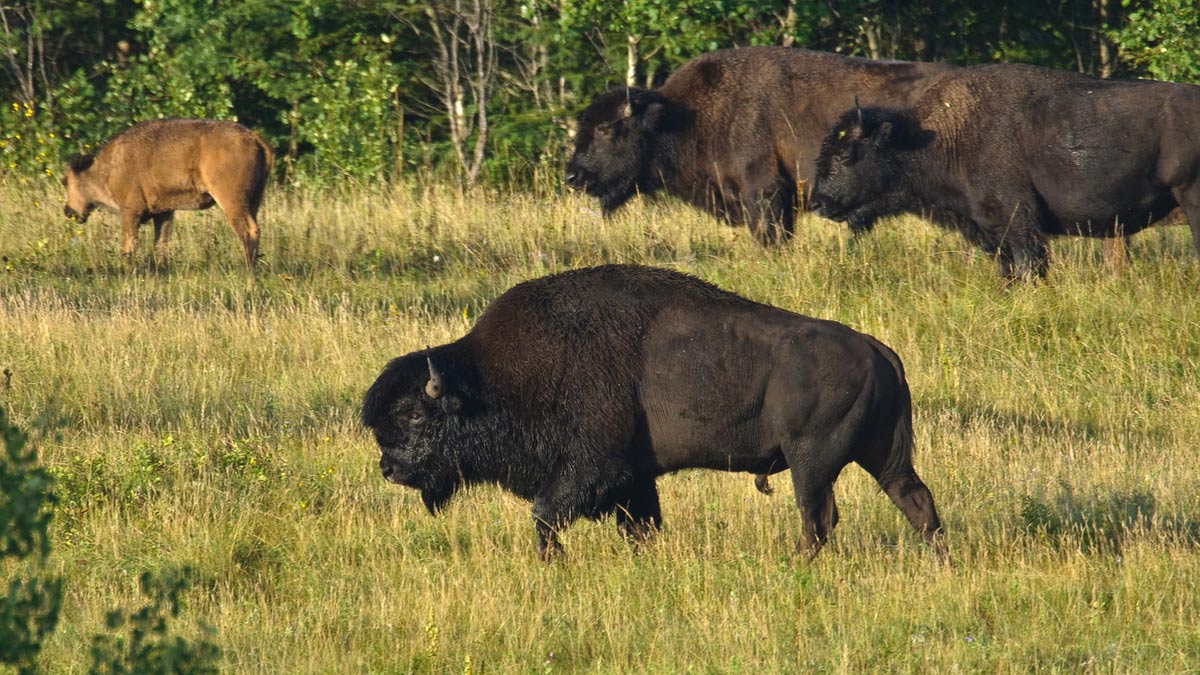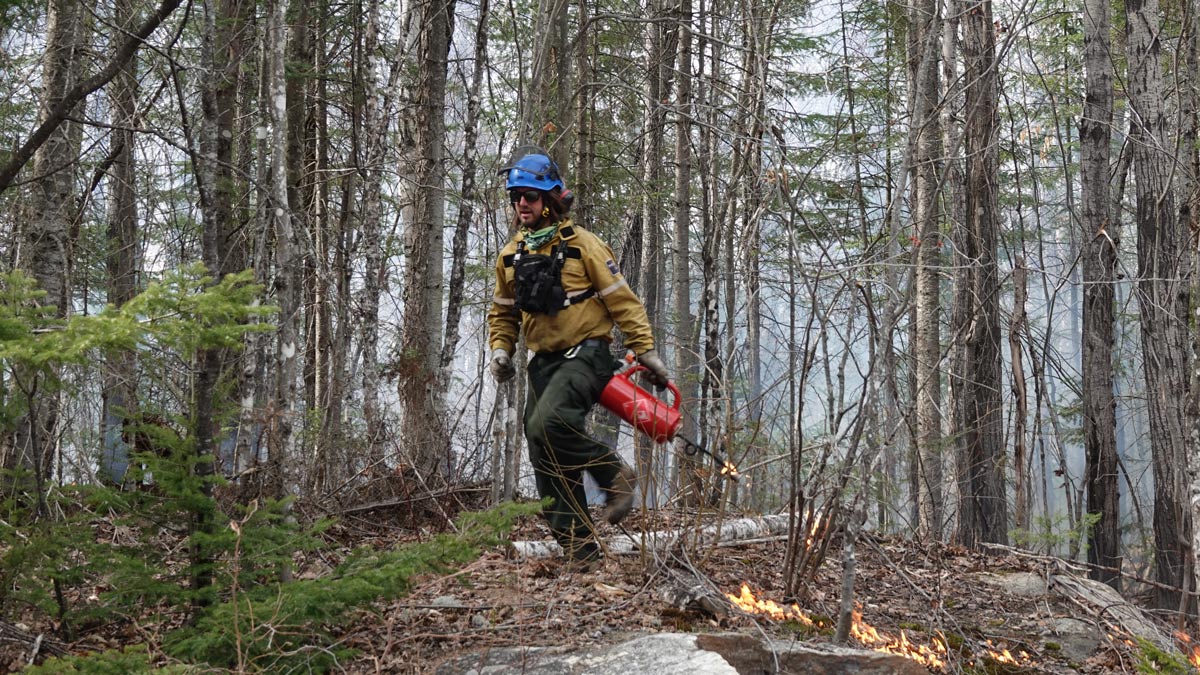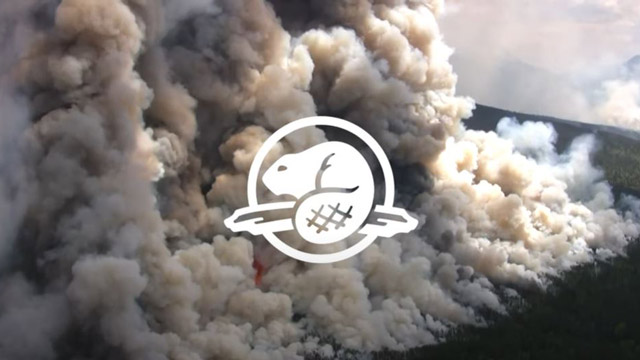
The role of fire
Fire has been part of grassland, brush and forest ecosystems in Canada for as long as they have existed. Like storms, avalanches, and floods, fire is a powerful force of change in nature. It renews and recycles ecosystems.
Many ecosystems have evolved with fire and depend on it for survival. A recently burned area may seem lifeless, but many species survive and thrive, giving rise to new, healthier ecosystems. Fire kick-starts regeneration by providing ideal growing conditions for sun-loving plant species. Wildlife search out these recently burned areas, searching for the nutritious plants and grasses that are the first to pop up.
Over time, fires create a mosaic of vegetation, with different ages and types. This provides a rich variety of habitats that support many species of insects, mammals and birds. This is biodiversity — it indicates a thriving ecosystem that is likely to survive in the future.
Mountain ecosystems
Whitebark and limber pine are keystone species in mountain ecosystems. This means that the trees play a really important role. They provide food and shelter for wildlife, stabilize slopes and hold onto the snowpack. This makes water available to other plants and helps prevent flooding in the spring.
Currently, whitebark and limber pine face many challenges. The trees are in decline and at risk of extinction. The main threats are white pine blister rust (a non-native fungus), fire suppression, mountain pine beetle and climate change.
Fire is an important part of mountain ecosystems. It has many benefits for whitebark and limber pine, like removing other trees that compete for resources and creating openings that attract Clark’s nutcrackers, an important bird species for the tree’s survival. Parks Canada uses prescribed fires and managed wildfires to return fire to the landscape. Additionally, reducing forest fuels helps to open up space in areas where burning isn’t safe. Overall, this work creates good habitat and growing conditions for whitebark and limber pine.
Learn more about saving whitebark and limber pine trees in the mountain national parks
Boreal ecosystems

In cool temperate areas, such as in the boreal forest, decay is slow. Logs, leaves, and needles pile up on the forest floor. Fire reduces this material to mineral-rich ash, releasing and recycling nutrients into the soil. Fire also creates openings in the forest. Sunlight penetrates these gaps, warming the soil and stimulating new growth from seeds and roots.
Increased biodiversity creates new habitat for insects, small plants and animals like the Sturgeon River plains bison herd.
Learn more about restoring ecosystems in Prince Albert National Park
Prairie grassland ecosystems
Fire is an important part of the grassland ecosystem. Fires help reduce the buildup of dead plant materials on top of the soil, allowing light and heat to penetrate the ground. This can help native plant species, like sagebrush grow.
However, fire can also be used to manage invasive and non-native plant species. In Grasslands National Park, prescribed fire is used to reduce the crested wheatgrass population. Crested wheatgrass is an aggressive non-native species that prevents native prairie plants from growing. Without native prairie plants, like sagebrush, the greater-sage grouse has lost much of its habitat in Canada.
Mixed-wood ecosystems

Mixed-wood ecosystems rely on fire to maintain biodiversity. Many animal species appreciate the characteristics of fire-affected terrain: open spaces, charred wood snags, and most importantly, plant seedlings as far as the eye can see.
In La Mauricie National Park, historic logging practices and fire suppression greatly reduced the eastern white pine’s population. However, after 30 years of fire being returned to the landscape, the future of the white pine is bright!
Learn more about 30 years of fire in La Mauricie National Park
Fire and wildlife
Many wildlife species across North America have evolved to live alongside fire. Fire has been on the landscape for millennia, and wildlife innately know how to respond when they feel threatened.
As a fire moves through the landscape, small changes in the land’s topography result in patchwork-like burns. Some areas will be more affected by fire than others. For example, depressions in the ground may provide a refuge for wildlife, as well as moist areas such as lakes and wetlands. Different species of trees and habitat types may also reduce fire severity and spread, giving wildlife more time to flee to safety. Most large animals, such as elk and bears will simply run away from the advancing wildfire. Smaller mammals, such as mice, may burrow underground to protect themselves.
Historical fire suppression combined with climate change has resulted in more frequent, severe wildfires than in the past. These severe wildfires can be especially damaging for wildlife. However, by creating more fire resilient landscapes through managed wildfire, prescribed fire, and fuel management, Parks Canada is working to protect all species who call national parks in Canada home.
What’s left after a fire
Many animals benefit from the effects of fire. Moose, elk, sheep, and deer all love to feed on freshly regenerated grasses and forbs. Aspen, raspberry, and rose sprout vigorously from their underground roots following a fire.
After a fire, studies have found that wood-pecker populations may increase fifty times! They come to feast on bark beetles and other insects that colonize the newly burned trees.
The Canada lynx benefits from fires that maintain the forest mosaic. It uses mature conifers for cover and hunts in recently burned areas that support large populations of its favourite prey — the snowshoe hare.
Lodgepole pine, jack pine, and pitch pine all have resin-sealed cones that can stay on the tree for many years. The heat of a fire melts the resin and the cones pop open. Thousands of seeds scatter onto the ground and grow into solid stands of pine.
Parks Canada’s Fire Management Program is committed to restoring fire on the landscape. Through managed wildfires, prescribed fire, and fuel management, Parks Canada is creating a safer, climate change-resilient system of national parks and historic sites.
Fire videos
Learn more about Parks Canada fire management with videos from national parks across the country.
